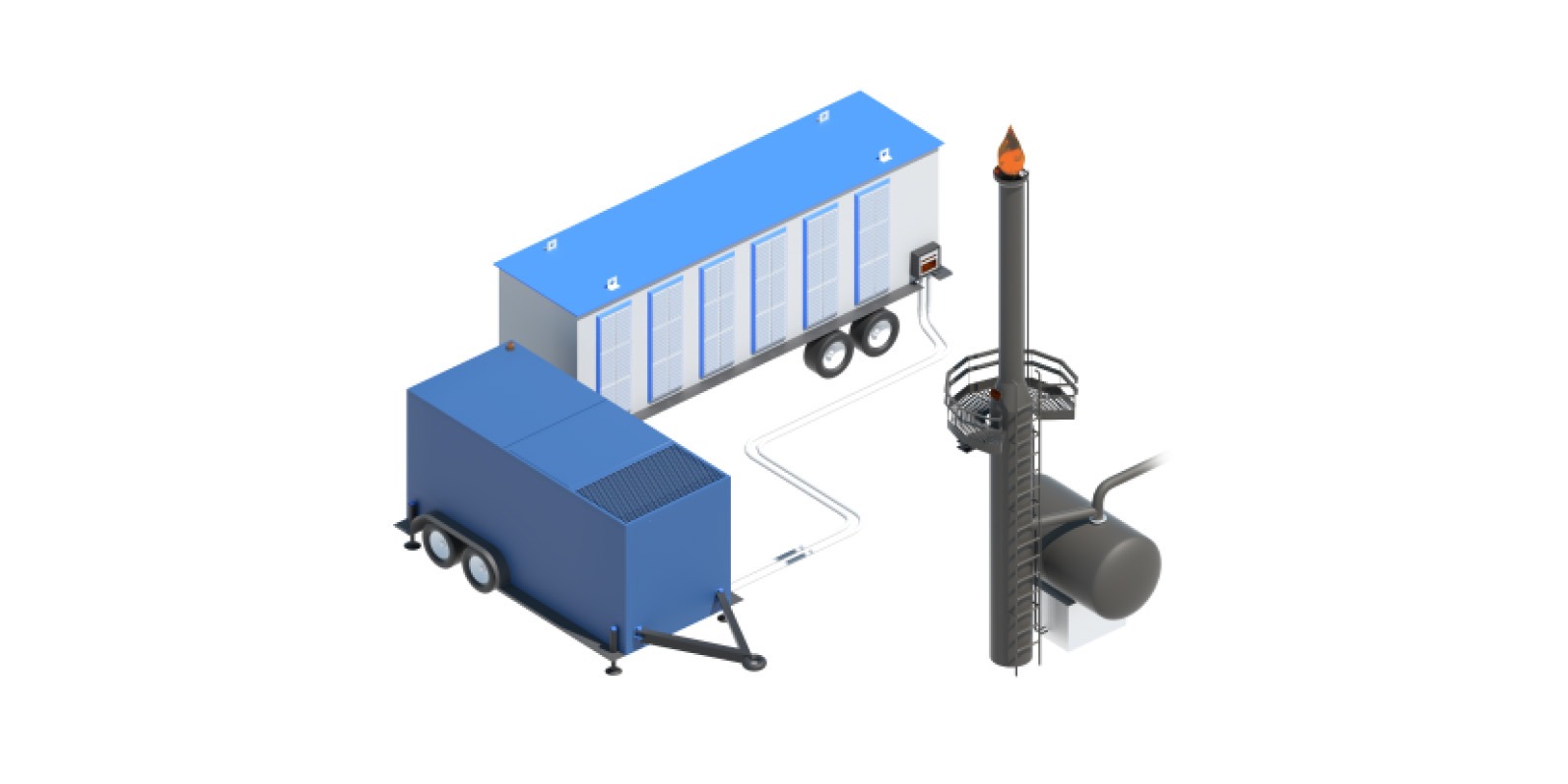Stay up to date with the latest news, announcements, and articles.
Their presence, however, is hardly celebrated. These flare stacks are installed by oil producers to burn (or “flare”) the natural gas released as a byproduct of oil drilling. An increase in fracking practices since 2010 has accelerated the release of these natural gas deposits.
Yet, natural gas is a commodity. Why is it flared by oil and gas producers instead of sold?

Why flaring?
Flaring, or the practice of burning off natural gas at the wellhead of oil drilling sites, has been a constant in the industry for decades. In its time, it was originally a “solution” to the previous practice of venting (or simply releasing natural gas into the atmosphere).
Petroleum gas is naturally produced at any site where oil deposits form. And when the shale oil boom started in the early 2000s, the volume of natural gas released as a byproduct of oil drilling became more than the existing infrastructure could handle.
Of the more than 9,000 oil and gas producers in the U.S., only a small minority had access to the needed infrastructure to transport that natural gas to market. At the same time, the price of natural gas fell drastically. Midstream companies lost interest in building pipelines, and the infrastructure lagged even more behind the release of natural gas deposits.
There are other flaring solutions that have been explored, such as “stripping” the natural gas of its most harmful components like methane. However, these advanced processes require investments that make them impossible for smaller producers to so much as consider.
As oil drilling continues at its current pace, more natural gas will continue to be burned and wasted unless gas flaring alternatives that are feasible for all sectors of the industry are adopted.
Traditional flaring solutions have failed to solve the problem. The enormous energy potential at these well pads, however, can now be utilized by a large electric end consumer—Bitcoin.
How to reduce gas flaring by generating electricity
Using natural gas to produce electricity is the right answer to work toward because it puts the gas to use instead of wasting it. The oil producers benefit from the revenue stream, and the end consumers benefit from access to an inexpensive source of electricity.
However, the remoteness of drilling locations and the lack of access to the electric grid make this solution impossible for most producers. What’s more, obtaining permits to sell to the power grid takes months (or even years).
Bitcoin mining and a well-designed crypto mining container now offer the industry a viable path forward.
The energy potential at well pads can be turned into electricity on-site using natural gas generators. These generators can be installed as part of a Bitcoin mining farm.

Bitcoin has become famous of late for three reasons:
- First, it revolutionized the world’s understanding of money
- Second, it made more headlines recently for its 600% hike in value
- At the same time, it’s also caught negative publicity for its high power consumption
Bitcoin often called a “new form of digital gold,” uses around 8 GW (7×109 W) of power to run the “blockchain” and validate coin transactions. The sophisticated computers required to “mine” Bitcoin are called ASICs.
This electricity-hungry equipment can solve the gas flaring problem with a natural symbiosis.
The idea revolves around the absolute certainty of Bitcoin’s energy requirements. However much gas is released from natural deposits at well pads, a Bitcoin mining container called the EZ Smartbox could consume it all once converted to electricity.
The lack of infrastructure reaching most oil producers is solved by installing an EZ Smartgrid system, which includes an on-site gas generator. That way, the stranded natural gas is converted into electricity without any added infrastructure or access to the grid required.
The EZ Smartbox
The EZ Smartbox is a prefabricated mobile mining cryptocurrency container that EZ Blockchain designed exclusively for blockchain mining, artificial intelligence training, and other high-demand computational processes. Picture a shipping container, but with custom engineering built from scratch to stay temperature resistant and lightweight.

The sandwich panels utilized in the EZ Smartbox are the keystone of the design
They support the temperature offset and house the information technology support and power distribution infrastructure. Surge protection and environmental monitoring are then combined with a stand-alone cooling system for unrivaled performance.
The EZ Smartbox runs a 2.7-MW operation in a 40-foot-long unit that is fully mobile and ready to be redeployed to any location within hours.
The EZ Smartgrid
The idea of building local electric grids is not new. However, producers have never had enough demand from consumers in remote areas to make this dream feasible.
Cryptocurrency is growing rapidly, and distributed computing, in general, is becoming a greater trend across industries. The time is now to tap the potential of flared (i.e., wasted) natural gas by deploying EZ Smartgrid Flaring Mitigation Systems.
The EZ Smartgrid includes a natural gas generator and an EZ Smartbox. The generator converts wasted, flared gas into electricity that’s immediately used to power the Smartbox.

The EZ Smartgrid is a win-win gas flaring solution for oil producers
It reduces gas flaring to 0 and diversifies the producer’s revenue stream by utilizing gas that would otherwise be wasted for Bitcoin mining instead.
Small and medium-sized oil producers, in particular, are utilizing the Smartgrid system for the combined appeal of the environmental, compliance, and economical benefits. Most of these are self-evident. With mounting pressure from governments to reduce flaring, the EZ Smartgrid is the simplest and most economical option to eliminate flaring altogether.
The extraordinary prices of Bitcoin over the last six months have helped producers see the instant revenue potential in oil and gas crypto mining, too.
EZ Blockchain projects in oil fields run entirely on flared gas. These installations are proof of the innovative concept and mark the beginning of a shift in the oil and gas industry.
There is no need to build a multibillion-dollar gas pipeline infrastructure or coordinate the sale of natural gas to the grid. Instead, with new emerging technologies and widespread access to the internet, EZ Smartbox mobile data centers create a new revenue stream for oil producers while offering an instant and easy-to-implement “forever solution” to gas flaring.
The only question is when you will become a part of it.
Click HERE to read the full article.
Fill out a form and our bitcoin mining expert will contact you.
FREE CONSULTATIONchoose
a miner
profit and
understand data?
business remotely
with EZ Blockchain?
Fill out a form and our bitcoin mining expert will contact you.










